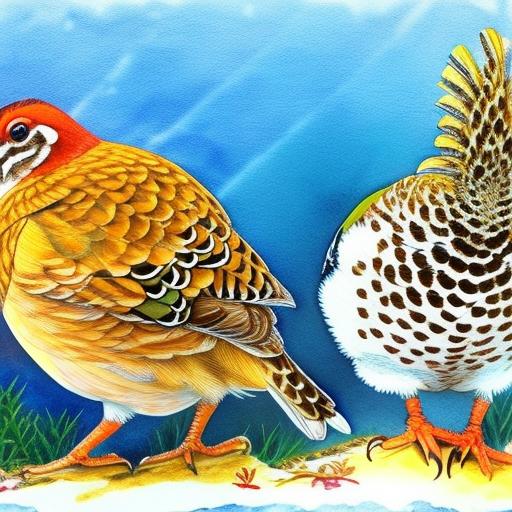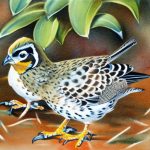Line breeding is a selective breeding method that aims to concentrate the genes of a particular ancestor or line of ancestors in the offspring. This is achieved by mating individuals that are related to the desired ancestor, such as siblings, cousins, or other close relatives. The goal of line breeding is to fix desirable traits within a population while minimizing the introduction of new genetic material. By doing so, breeders hope to maintain and enhance specific characteristics, such as size, color, temperament, or performance, within a particular line of animals.
Line breeding is based on the principle of genetic dominance and recessiveness. When closely related individuals are mated, there is a higher chance that the desired traits will be expressed in the offspring. This is because closely related individuals are more likely to carry the same genes for specific traits. However, line breeding also increases the risk of expressing undesirable traits that may be hidden in the genetic makeup of the ancestors. Therefore, careful selection and evaluation of breeding stock are crucial in line breeding programs to ensure that the desired traits are fixed and undesirable traits are minimized.
Key Takeaways
- Line breeding involves breeding closely related individuals to concentrate desirable traits and genes in a population.
- When selecting breeding stock, it is important to consider the health, temperament, and conformation of the animals, as well as their genetic background.
- Establishing breeding lines involves creating distinct groups of animals with specific traits and characteristics to maintain and improve genetic diversity.
- Maintaining genetic diversity is crucial for the long-term health and viability of a population, as it helps to reduce the risk of genetic disorders and inbreeding depression.
- Managing inbreeding involves carefully monitoring the level of relatedness between individuals and implementing strategies to minimize the negative effects of inbreeding.
- Monitoring and evaluating line breeding programs is essential to track the progress of breeding efforts and make informed decisions for future breeding selections.
- The benefits of line breeding include the ability to fix desirable traits in a population, while the challenges include the potential for increased risk of genetic disorders and reduced genetic diversity.
Selecting Breeding Stock
Selecting breeding stock is a critical step in line breeding programs. Breeders must carefully evaluate potential breeding animals to ensure that they possess the desired traits and genetic makeup. This involves assessing the physical characteristics, performance, temperament, and genetic background of the animals. In line breeding, it is important to prioritize the selection of individuals that are closely related to the desired ancestor or line of ancestors. This increases the likelihood of passing on the desired traits to the offspring.
In addition to physical and performance traits, breeders must also consider the genetic diversity and health of the breeding stock. Inbreeding depression, which occurs when closely related individuals are mated, can lead to reduced fertility, increased susceptibility to diseases, and decreased overall fitness in the offspring. Therefore, it is important to carefully manage the level of inbreeding within a line breeding program to avoid these negative consequences. By selecting breeding stock with diverse genetic backgrounds and good overall health, breeders can minimize the risks associated with inbreeding and maintain the long-term viability of the breeding lines.
Establishing Breeding Lines
Establishing breeding lines is a key aspect of successful line breeding programs. Breeders must carefully plan and manage the matings within a line to ensure that the desired traits are consistently passed on to future generations. This involves identifying and documenting the genetic makeup of the breeding stock, including their ancestry and known genetic traits. By keeping detailed records of the breeding lines, breeders can track the inheritance of specific traits and make informed decisions about future matings.
In addition to genetic documentation, breeders must also consider the overall goals and objectives of the line breeding program when establishing breeding lines. This includes defining the specific traits that are being targeted for enhancement or maintenance, as well as setting clear criteria for selecting breeding stock and evaluating the success of the program. By establishing clear breeding lines and goals, breeders can focus their efforts on achieving specific outcomes and maintaining consistency within the population.
Maintaining Genetic Diversity
Maintaining genetic diversity is essential for the long-term success of line breeding programs. While line breeding aims to concentrate the genes of a particular ancestor or line of ancestors, it is important to avoid excessive inbreeding that can lead to reduced genetic diversity and increased risk of inbreeding depression. To maintain genetic diversity, breeders can introduce new genetic material from outside sources, such as outcrossing with unrelated individuals or using carefully selected individuals from other lines within the same breed.
By introducing new genetic material into the breeding lines, breeders can reduce the risk of inbreeding depression and increase the overall fitness and adaptability of the population. However, it is important to carefully manage the level of outcrossing to avoid diluting the desired traits that have been fixed within the line. By striking a balance between maintaining genetic diversity and preserving the desired traits, breeders can ensure the long-term viability and success of their line breeding programs.
Managing Inbreeding
Managing inbreeding is a critical aspect of successful line breeding programs. Inbreeding occurs when closely related individuals are mated, leading to an increase in homozygosity and a higher likelihood of expressing both desirable and undesirable traits. While inbreeding can help fix desirable traits within a population, it also increases the risk of inbreeding depression, which can have negative effects on fertility, health, and overall fitness in the offspring.
To manage inbreeding, breeders can use various techniques such as pedigree analysis, inbreeding coefficients, and selection strategies to minimize the risks associated with inbreeding depression. By carefully monitoring and managing the level of inbreeding within a population, breeders can maintain the desired traits while minimizing the negative effects of inbreeding depression. Additionally, breeders can use techniques such as crossbreeding or outcrossing to introduce new genetic material and reduce the level of inbreeding within a line breeding program.
Monitoring and Evaluating Line Breeding Programs

Monitoring and evaluating line breeding programs is essential for assessing their success and making informed decisions about future matings and breeding stock selection. Breeders must regularly assess the performance, health, and genetic diversity of the population to ensure that the desired traits are being maintained and that inbreeding depression is minimized. This involves keeping detailed records of pedigrees, genetic traits, and performance data for each individual within the breeding lines.
In addition to monitoring individual performance and genetic diversity, breeders must also evaluate the overall success of the line breeding program in achieving its goals and objectives. This includes assessing whether the desired traits have been consistently passed on to future generations, whether inbreeding depression has been effectively managed, and whether the population remains healthy and viable. By regularly monitoring and evaluating line breeding programs, breeders can make informed decisions about future matings and adjustments to their breeding strategies to ensure long-term success.
Benefits and Challenges of Line Breeding
Line breeding offers several benefits for breeders who are looking to maintain or enhance specific traits within a population. By concentrating the genes of a particular ancestor or line of ancestors, breeders can fix desirable traits within a population while maintaining consistency and predictability in their offspring. This can be particularly valuable for breeders who are looking to produce animals with specific performance or physical characteristics that are highly valued in their respective industries.
However, line breeding also presents several challenges that breeders must carefully manage to ensure its success. One of the main challenges is managing inbreeding depression, which can have negative effects on fertility, health, and overall fitness in the offspring. Additionally, maintaining genetic diversity while concentrating specific traits within a population requires careful management to avoid excessive inbreeding or dilution of the desired traits. By carefully managing these challenges and regularly monitoring and evaluating their line breeding programs, breeders can maximize the benefits of line breeding while minimizing its potential drawbacks.
In conclusion, line breeding is a selective breeding method that aims to concentrate specific traits within a population by mating closely related individuals. By carefully selecting breeding stock, establishing clear breeding lines, maintaining genetic diversity, managing inbreeding, and monitoring and evaluating their programs, breeders can successfully maintain or enhance specific traits within their populations while minimizing potential drawbacks. While line breeding offers several benefits for breeders looking to produce animals with specific characteristics, it also presents challenges that require careful management to ensure its long-term success.
If you’re interested in line breeding coturnix quail, you may also want to explore the article on creating a functional and efficient chicken coop at Poultry Wizard. Understanding the importance of a well-designed coop can help ensure the health and productivity of your quail breeding operation.
FAQs
What is line breeding in coturnix quail?
Line breeding in coturnix quail is a breeding method where closely related individuals within the same family line are mated to maintain or enhance specific desirable traits. This can include traits such as size, color, egg production, or temperament.
What are the benefits of line breeding coturnix quail?
Line breeding can help to fix desirable traits within a specific family line of coturnix quail. It can also help to maintain genetic diversity within a specific line while still allowing for the expression of desired traits.
What are the potential drawbacks of line breeding coturnix quail?
Line breeding can lead to an increase in the expression of undesirable traits or genetic abnormalities within a specific family line. It can also reduce genetic diversity within that line, which may lead to decreased overall health and vigor.
How can line breeding be done effectively in coturnix quail?
To effectively line breed coturnix quail, it is important to carefully select breeding stock with the desired traits and to monitor the offspring for any undesirable traits or genetic abnormalities. It is also important to periodically introduce new genetic material from outside the family line to maintain genetic diversity and overall health.
What are some considerations for line breeding coturnix quail?
When line breeding coturnix quail, it is important to keep detailed records of the breeding program, including the traits of the breeding stock and the traits expressed in the offspring. It is also important to be mindful of the potential for inbreeding depression and to take steps to mitigate its effects, such as periodically outcrossing with unrelated individuals.
Meet Walter, the feathered-friend fanatic of Florida! Nestled in the sunshine state, Walter struts through life with his feathered companions, clucking his way to happiness. With a coop that’s fancier than a five-star hotel, he’s the Don Juan of the chicken world. When he’s not teaching his hens to do the cha-cha, you’ll find him in a heated debate with his prized rooster, Sir Clucks-a-Lot. Walter’s poultry passion is no yolk; he’s the sunny-side-up guy you never knew you needed in your flock of friends!







